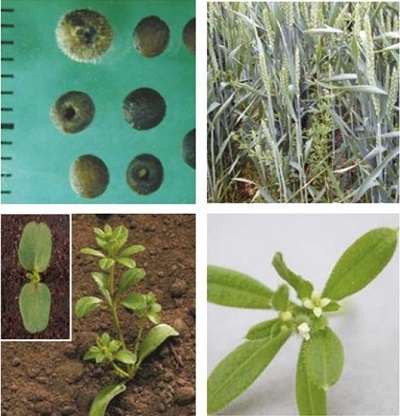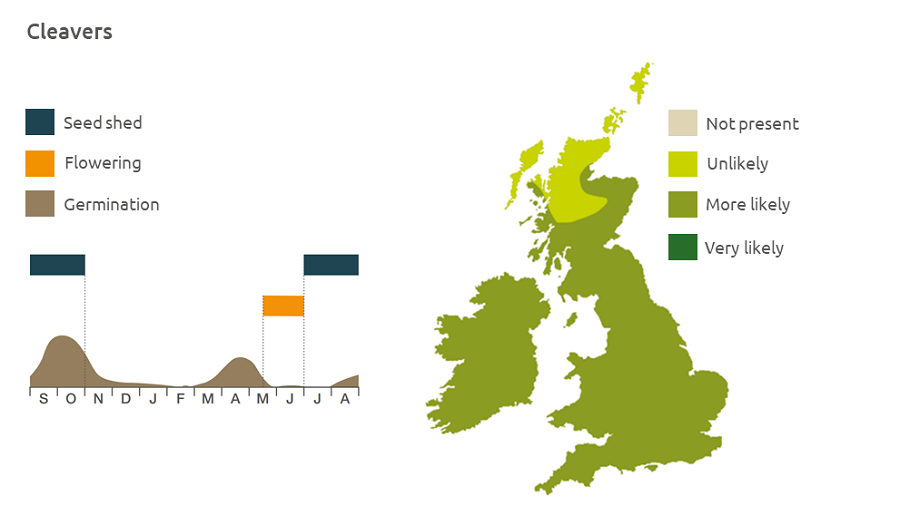- Home
- Knowledge library
- Distribution and biology of cleavers in the UK
Distribution and biology of cleavers in the UK
Adult cleavers are very competitive in winter cereals and oilseed rape and can cause harvest contamination. Find out how to identify and control these broad-leaved weeds.
Overview
Cleavers (Galium aparine) can germinate and young plants continue to grow over mild winters, although mature plants die before frost starts. Adult cleavers plants are very competitive; they can be very large and can choke wheat crops by growing over the top of the canopy, causing crop lodging and affecting combining. Seeds are moved in crop grain or by clinging to fur or clothing and require chilling before germination. A long autumn germination period is supported in a winter cropping system. 3% of oilseed rape samples are rejected because they contain more than 4% of cleavers seed. The seeds can also be difficult to remove from cereal samples and cause losses of grain.
- It is particularly competitive in winter wheat and winter oilseed rape
Description
It is a scrambling or climbing annual dicotyledon. The stems are four-angled, 50–200 cm long, covered with minute, down-curved prickly hairs.
Key features
Young plant: The oval cotyledons are notched at the tip.
Flowers: The flowers are white.
Lookalikes
Cleavers may be confused with ivy-leaved speedwell at the cotyledon stage. Cleaver cotyledons are notched at the tip and have longer cotyledon stalks. Cleavers may also be confused with some hemp-nettles.

Location and life cycle

Geographic distribution
Cleavers is found all over Britain except for the very highest mountainous areas. It has spread north and west following the trends in winter cropping.
Soil type
It is found on well-watered humus-rich loam and clay soils and grows best on highly fertile soils.
Seed statistics
- Seed longevity: 1–5 years
- Germination depth: 7 cm
- Seed weight: 8.3 mg
- Seeds/flower: 2
- Seeds/plant: 300–400
Management
Cleavers cannot be controlled purely by cultural methods. Mechanical and tine weeders can be used to remove a proportion of emerged cleavers within the wheat crop. Ploughing may increase seedling emergence, when seeds brought to the soil surface germinate.
For advice on herbicides, please speak with your agronomist or adviser.
When was this information last updated?
This page is based on content from the encyclopaedia of arable weeds publication. Since it was first released in 2008, the publication has been redesigned several times but not revised. However, it remains a good foundation for general information on the distribution and biology of weeds.

